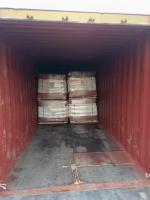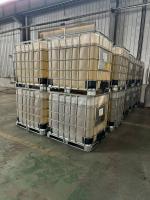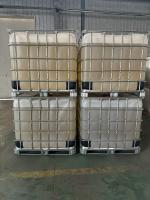Our Products
Water Treatment Chemicals / cationic polyacrylamide zetag 8187 can be replaced by Chinafloc C8080

cationic polyacrylamide zetag 8187 can be replaced by Chinafloc C8080
Cationic polyacrylamide (CPAM) is a water-soluble polymer synthesized by copolymerizing acrylamide with cationic monomers such as diallyldimethylammonium chloride (DADMAC) or other quaternary ammonium salts. Known for its excellent flocculating properties, high molecular weight, and cationic charge density, CPAM is extensively used in various industries, including water treatment, papermaking, mineral processing, textiles, oil and gas, and food processing. Its primary function revolves around improving solid-liquid separation, enhancing filtration efficiency, and facilitating particle aggregation. Below is a comprehensive explanation of the many applications of cationic polyacrylamide across different sectors.
1. Water and Wastewater Treatment
a. Municipal Wastewater Treatment
CPAM is widely applied in the treatment of municipal sewage and sludge. It is used as a flocculant to aid in the clarification and purification of sewage by aggregating suspended particles, organic matter, and colloids. This facilitates their removal via sedimentation or flotation. Due to the positive charges on the polymer chains, CPAM is especially effective in neutralizing negatively charged sludge particles.
b. Sludge Dewatering
One of the most significant applications of cationic polyacrylamide is in sludge dewatering. CPAM is used to condition sludge before mechanical dewatering processes such as centrifugation, belt filter presses, and plate-and-frame presses. By forming strong flocs, CPAM enhances the water removal capacity of sludge, reducing its volume and transportation costs. This application is crucial for wastewater treatment plants to manage biosolids efficiently.
c. Drinking Water Treatment
In the production of potable water, CPAM is used as a coagulant aid to improve floc formation, enhance sedimentation, and reduce turbidity. It works alongside primary coagulants such as aluminum sulfate or ferric chloride to aggregate fine particles and organic matter, ensuring higher clarity and safer drinking water.
d. Industrial Wastewater Treatment
Various industries, including chemical manufacturing, pharmaceuticals, electronics, and food processing, generate wastewater laden with suspended solids, heavy metals, dyes, and organic pollutants. CPAM is used to remove these contaminants by promoting coagulation and flocculation. It helps in reducing chemical oxygen demand (COD), biological oxygen demand (BOD), and total suspended solids (TSS).
2. Papermaking Industry
The papermaking sector is one of the largest consumers of cationic polyacrylamide due to the need for process optimization and product quality enhancement.
a. Retention Aid
In paper manufacturing, CPAM is used as a retention aid to improve the retention of fillers, fibers, and other additives during sheet formation. This results in better material utilization and improved paper quality.
b. Drainage Aid
CPAM accelerates water drainage during the paper forming process, which increases machine speed, reduces energy consumption during drying, and enhances production efficiency.
c. Dry Strength Agent
Cationic polyacrylamide contributes to the dry strength of paper by forming ionic and hydrogen bonds with cellulose fibers. This is particularly valuable in recycled paper applications where fiber bonding is reduced.
d. Pitch and Stickies Control
Pitch and stickies are problematic substances found in pulps, especially in recycled paper processes. CPAM can neutralize and agglomerate these sticky substances, preventing their deposition on equipment and improving product cleanliness.
3. Oil and Gas Industry
The oil and gas sector uses CPAM for enhanced oil recovery, drilling fluid treatment, and produced water treatment.
a. Enhanced Oil Recovery (EOR)
In tertiary oil recovery processes, CPAM is used as a mobility control agent. When injected into reservoirs, it increases the viscosity of the flooding water, allowing for more effective displacement of oil trapped in porous rock formations.
b. Drilling Fluid Additive
In drilling operations, CPAM is used as a flocculant to treat drilling mud and reduce the content of suspended solids. It improves the rheological properties of the mud, supports better cuttings transport, and enhances drilling efficiency.
c. Produced Water Treatment
Produced water from oil wells often contains oil droplets, solids, and dissolved organics. CPAM is employed to promote the coalescence of oil droplets and removal of suspended solids, facilitating the reuse or safe disposal of the water.
4. Mining and Mineral Processing
Cationic polyacrylamide is widely used in mining operations for water clarification, tailings treatment, and ore concentration.
a. Tailings Dewatering
CPAM is used to treat mine tailings by flocculating fine particles, which accelerates sedimentation and improves water recovery. This is critical for environmental compliance and reducing water consumption.
b. Clarification of Process Water
In flotation and beneficiation processes, CPAM assists in clarifying process water by removing fine clays, slimes, and ore residues. Recycled water can then be reused, reducing operational costs.
c. Flotation Agent
Though primarily used for flocculation, CPAM can also play a role in mineral flotation as a selective depressant or modifier, depending on the mineral being processed.
5. Textile and Dyeing Industry
In the textile sector, CPAM is applied in wastewater treatment, dye fixation, and fabric conditioning.
a. Effluent Treatment
Dyehouses discharge colored wastewater containing reactive dyes, surfactants, and salts. CPAM is effective at removing dyes and suspended solids by flocculating them into settleable flocs.
b. Dye Fixing Agent
CPAM is used in post-dyeing treatments to improve dye fixation and reduce color bleeding. It binds to dye molecules and fibers, enhancing colorfastness.
6. Food and Beverage Industry
Although CPAM is not used directly in food processing, it plays a crucial role in water treatment systems within food and beverage plants.
a. Wastewater Treatment
CPAM treats wastewater streams containing fats, proteins, sugars, and suspended solids. Its flocculating ability aids in meeting environmental discharge standards and facilitates water recycling within plants.
7. Chemical and Pharmaceutical Industry
These sectors often produce complex effluents containing organic solvents, pharmaceutical residues, and other chemicals.
a. Flocculation of Chemical Wastewater
CPAM is effective in aggregating and removing suspended chemical substances, enhancing the performance of downstream biological or physical treatment systems.
b. High-Purity Water Pretreatment
Before ultrapure water systems, CPAM can be used in pretreatment steps to remove fine particulates, protecting membrane filters and resins from fouling.
8. Agriculture and Soil Conditioning
While not as widespread as in water treatment, CPAM has applications in agriculture.
a. Soil Stabilization
CPAM can be used to prevent soil erosion and improve soil structure in agricultural lands by binding fine particles, thus reducing runoff and improving water infiltration.
b. Irrigation Water Treatment
In regions using recycled or turbid water for irrigation, CPAM can help clarify the water, reducing clogging in irrigation systems and improving plant health.
9. Cosmetic and Personal Care Products
CPAM is occasionally used in personal care products as a conditioning agent due to its film-forming and antistatic properties.
a. Hair Conditioners and Creams
Its positive charges help neutralize static electricity on hair surfaces, providing a smooth, manageable feel. It is also used in creams and lotions to stabilize emulsions.
10. Swimming Pools and Recreational Water Treatment
Maintaining clear and clean recreational water is essential. CPAM is used as a clarifier in swimming pools and spas to remove fine suspended particles that are not easily filtered out, resulting in crystal-clear water.




765_small.jpg)
